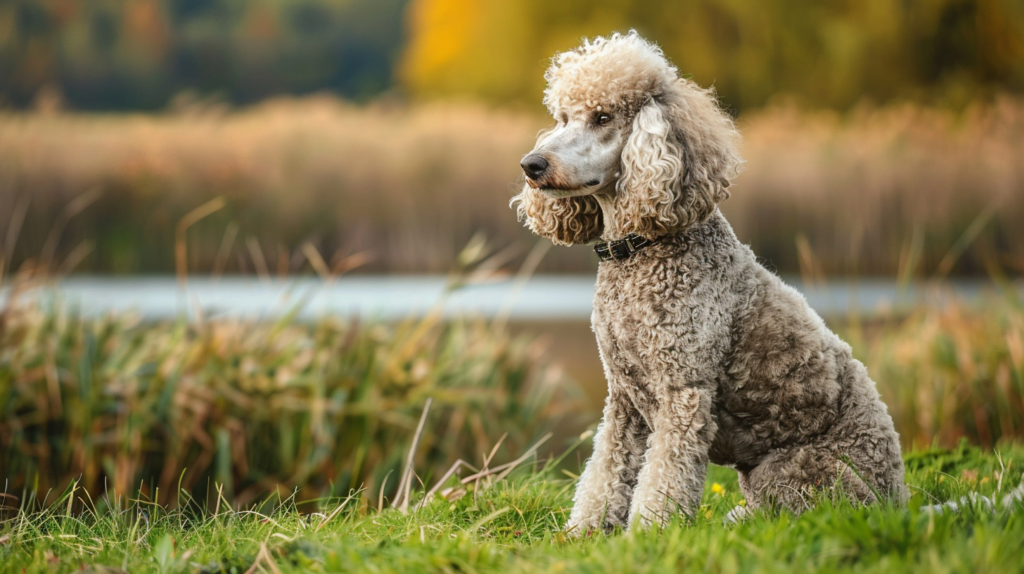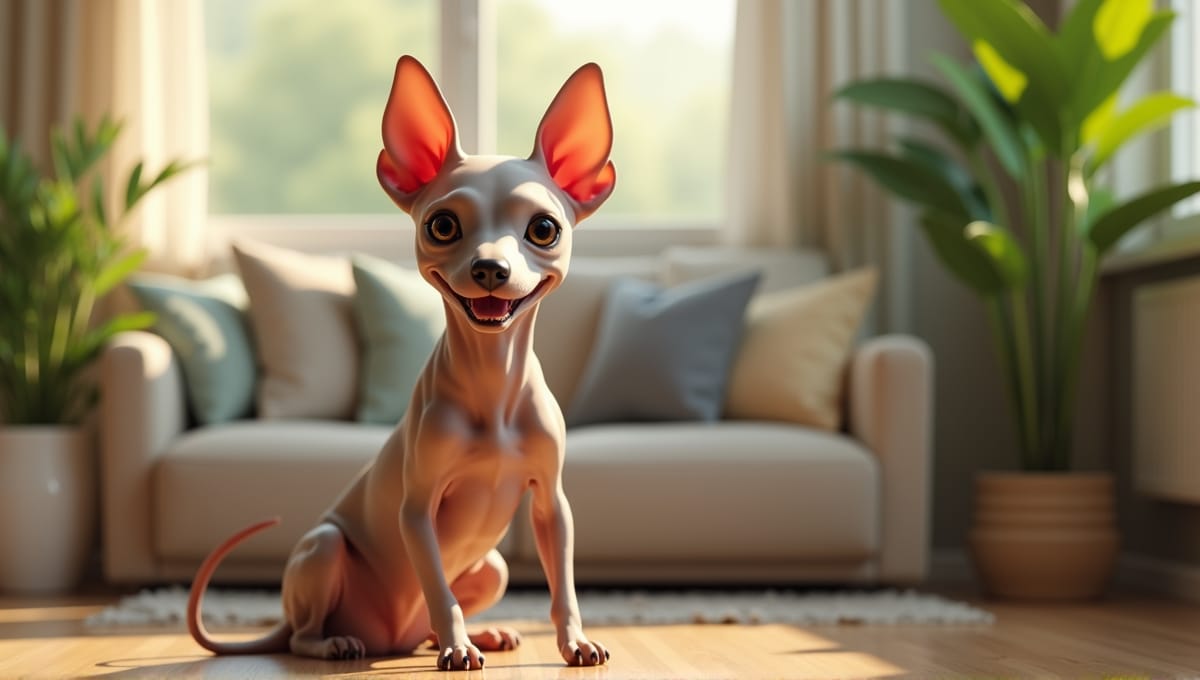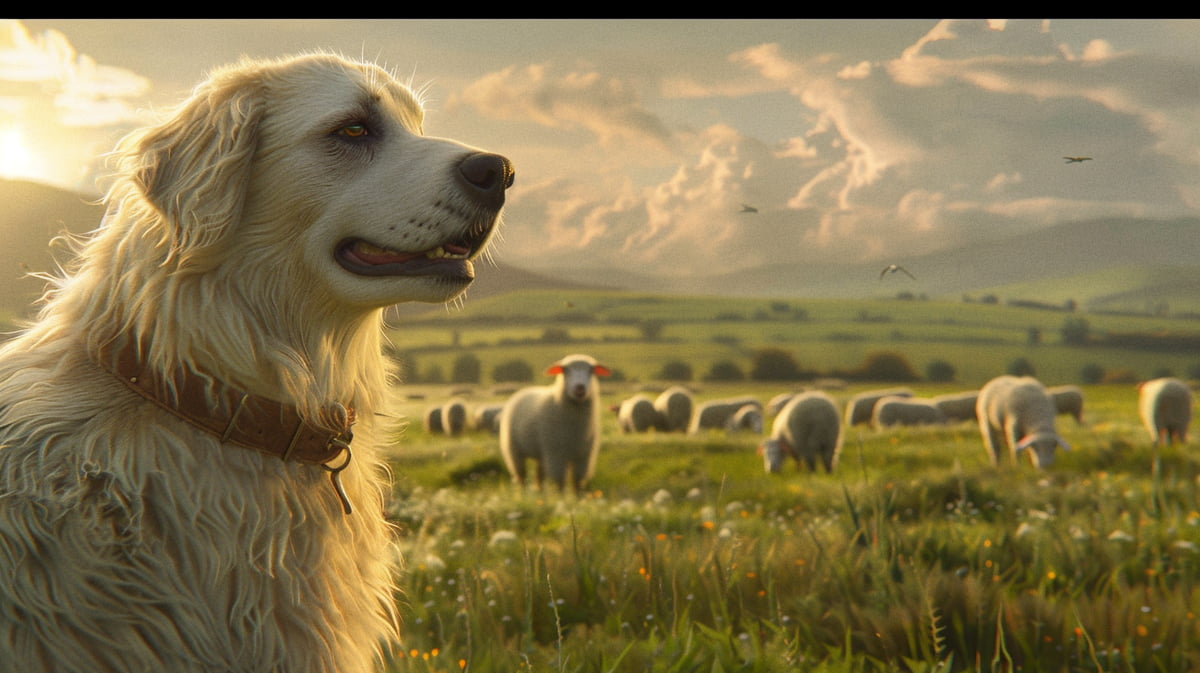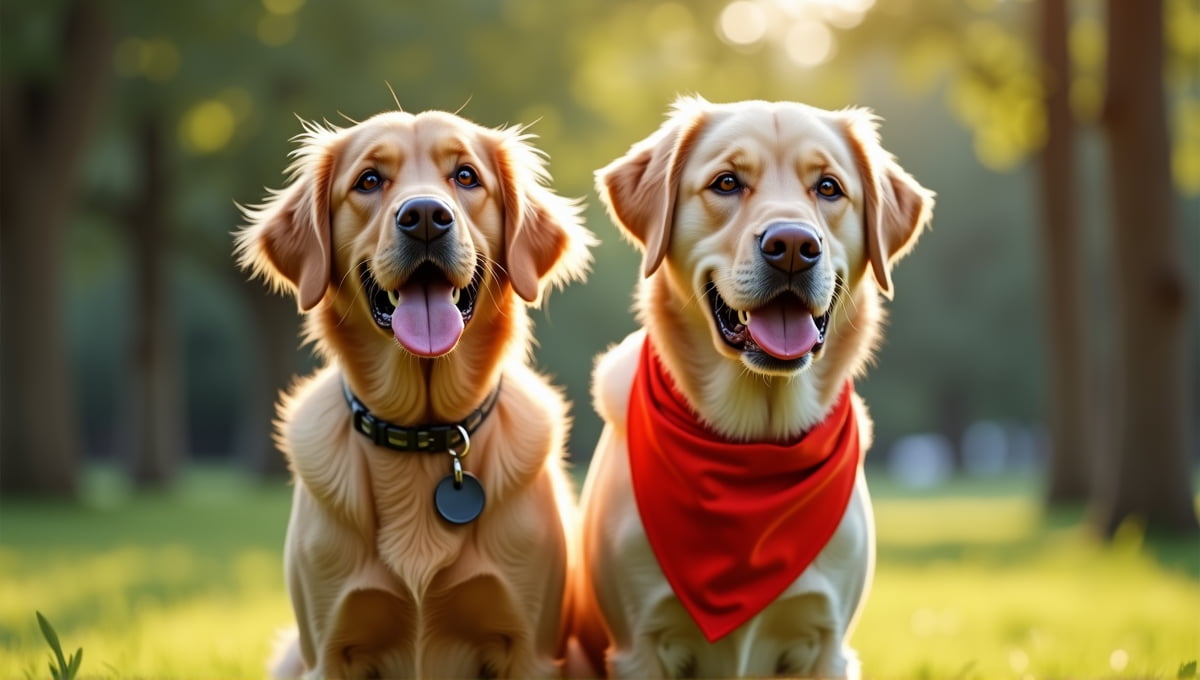I’ve been surrounded by dogs for as long as I can remember, and I can say with confidence that large poodle breeds are truly remarkable dogs.
These oversized poodles are just as intelligent as their smaller counterparts, yet they have the added benefit of size. However, they aren’t suitable for everyone. Owning one of these massive and beautiful dogs requires space, time, and dedication. So what sets the large poodle breeds apart, and are they the right choice for your family?
Large Poodle Breeds Overview
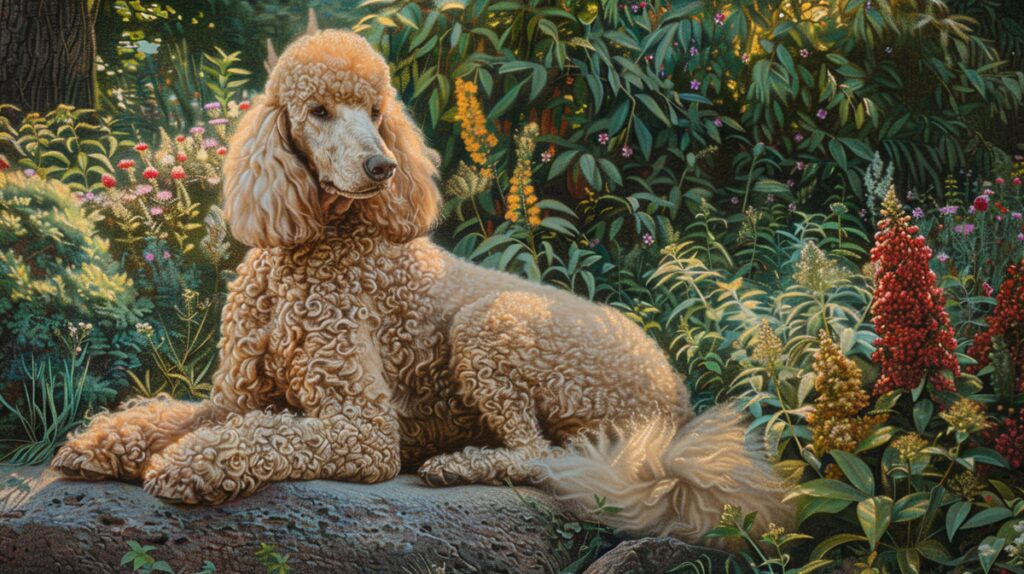
The large poodles are the largest of the poodle breeds, and they have a very majestic, proud appearance. Large poodles originated from the same water retrieving dogs in the 15th century. While smaller variations were bred from the originals, some things remain consistent with the large versions.
What sets large poodles apart? Their size is the most obvious difference. They dwarf miniature and toy poodles. Their coats are curly and dense, and they require regular grooming. Their eyes are very expressive, and they have a regal posture and walk.
The most popular large poodle breeds are:
- Standard Poodle
- Royal Poodle
- Klein Poodle (Moyen)
- Giant Poodle
Larger poodle breeds often have a more relaxed personality than their smaller counterparts. They’re not as likely to bark excessively or become hyperactive. If you see a large poodle barking, it’s not necessarily a bad thing. Their size can be a bit intimidating, but these dogs are actually very gentle and sweet.
I’ve trained many large poodles, and they make great pets for families. Their strong intelligence makes them easy to train, and I’ve seen them excel in a variety of roles, from therapy dogs to agility champions.
Large poodles require plenty of exercise and mental stimulation, and they adore human contact. If you decide to bring a large poodle into your home, expect a loyal and active companion.
The Standard Poodle: The Original Large Poodle Breed
Standard Poodles are the classic large poodle. They’re smart, elegant, athletic, and beautiful. Males stand 18-24 inches at the shoulder and females are 18-21 inches. Males weigh 45-70 pounds, while females weigh 45-60 pounds.
Their coat is another impressive display of texture and variety. They can have curly, corded, or wavy coats, and can be a range of colors from solid blacks, whites, parti-colors, phantoms, and more. The options are endless.
Standard Poodles have a fantastic temperament. They’re friendly, outgoing, and very eager to please. You’ll see their intelligence in everything they do. They’re extremely trainable and do very well in obedience.
They’re also very energetic dogs, so exercise is important. This can be a daily walk, jog, or vigorous play in the backyard. They also adore swimming and are excellent at it.
Their grooming needs are high. Their coat requires frequent brushing and professional grooming every 4-8 weeks. While it’s a commitment, it’s worth it for a poodle’s stunning appearance.
Standard Poodles seem to do well in virtually any home, provided they get enough exercise and mental stimulation. They’re really one of the most versatile breeds and make excellent pets in a wide range of home circumstances.
Large Poodle Mixes: Doodle Varieties
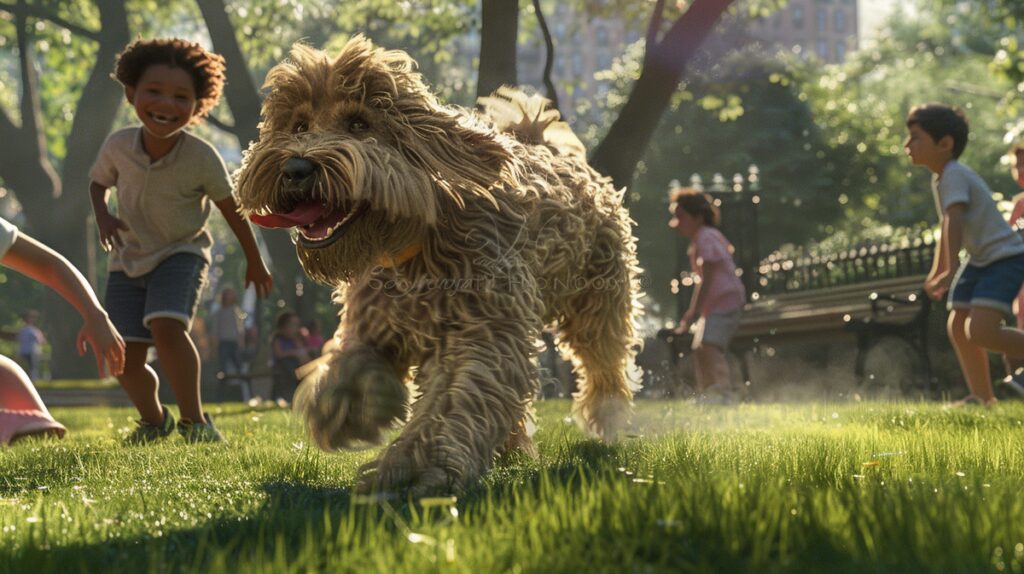
Poodle mixes, also known as “doodles,” have become incredibly popular in the dog world. These lovable hybrids combine poodle smarts with the characteristics of other breeds. Large poodle mixes are an excellent choice if you want the best of both worlds.
Common large poodle mix breeds include:
- Goldendoodle (Golden Retriever + Poodle)
- Labradoodle (Labrador Retriever + Poodle)
- Bernedoodle (Bernese Mountain Dog + Poodle)
- Shepadoodle (German Shepherd + Poodle)
- Saint Berdoodle (Saint Bernard + Poodle)
These poodle mix breeds vary significantly in size. Some large poodle mixes are truly massive. For example, pyredoodles and mastidoodles may grow up to 32 inches at the shoulder and weigh 100-120 pounds.
Large doodle dogs typically have a friendly, outgoing temperament. Many inherit the intelligence and trainability of a poodle. Most also display a wonderful combination of the best traits from both parent breeds.
However, grooming requirements for large poodle mixes can be overwhelming. Their coats often blend poodle curls with characteristics of the other parent breed. Most are high shedders, so you should be prepared to brush them regularly and schedule professional grooming appointments.
I’ve been fortunate to meet many large poodle mixes. Each has its own unique personality and appearance. Most are excellent family dogs because they’re playful yet gentle.
Health Considerations
Large poodle breeds, just like standard poodles, are prone to a few health problems. Knowing what to look for can help you provide the best care.
The most common health concerns include:
- Hip dysplasia
- Bloat (gastric dilatation-volvulus)
- Progressive retinal atrophy
- Sebaceous adenitis
- Addison’s disease
Genetic testing is essential. Reputable breeders will have tested the parent dogs for these health concerns, which significantly reduces the risk of poodle-specific health problems.
Regular vet checkups are also critical, as catching health problems early can make a big difference. As a rule of thumb, I recommend bi-annual vet checkups for large poodles.
Proper nutrition also plays a key role in preventing health problems. Large poodles should eat a balanced diet designed for their size and activity level. Avoid overfeeding them, as excess weight can put stress on their joints.
Regular exercise is important, but you should monitor it carefully. Don’t engage in high impact activities until their growth plates have closed. Swimming is an excellent low-impact exercise option for poodles.
Proper care can significantly increase the lifespan of large poodles. If you focus on a healthy diet and proper exercise, these dogs will almost certainly live longer, more active lives.
Training and Socialization
Training standard poodles is a delight. They’re intelligent and eager to please, making them very responsive to positive reinforcement.
Early socialization is key. Introduce your standard poodle puppy to different people, animals, and environments. This helps ensure a well-behaved adult dog.
Begin basic obedience training early. Teaching your poodle puppy to sit, stay, come, and walk on a leash will become the foundation for more advanced training. Poodles pick up these basics quickly and often advance rapidly to more advanced training.
Many standard poodles do well with advanced training. They are excellent at:
- Agility
- Obedience
- Therapy
- Scent training
Providing mental stimulation is just as important as exercise. Training, puzzle toys, and games with you can help keep their minds sharp.
Over the years, I’ve worked with many standard poodles. Their ability to learn is nothing short of impressive. With some patience and consistency, you can train a poodle that’s an excellent, adaptable companion.
Living with Large Poodle Breeds
Large poodles need plenty of space to run and play, so a house with a fenced yard is perfect. However, they can also live in an apartment if you commit to giving them plenty of exercise.
Prepare your home for a large poodle by removing anything that could be harmful and providing a comfortable bed. You can also use baby gates if there are certain areas where you don’t want them to have access.
Your poodle’s exercise routine will depend on its age and fitness level. However, most need a daily walk, run, or playtime. Many large poodles enjoy swimming, which is a great low-impact exercise option.
Large poodles are generally good with children because they’re very patient and have plenty of energy to play. However, always watch them closely when they’re around small children.
If you want to take your poodle on a trip, you’ll need to make a plan as they require plenty of space in the car and pet-friendly places to stay. Many large poodles do well with travel and enjoy the opportunity to see new places and have new adventures.
Overall, living with a large poodle is an excellent experience. They’re loyal, smart, and very loving, making them an excellent companion. As long as you take good care of them, they’ll be a source of happiness for many years to come.
Finishing up
The larger poodle breeds are an excellent combination of intelligence, grace, and a great personality. They are playful and friendly, and they bring happiness to many families. I’ve personally witnessed the way these gentle giants can change a family’s world.
Just keep in mind that owning a larger poodle is a significant responsibility. It will demand time, energy, and affection. However, the payoff is more than worth it. Your poodle will be a loyal companion for life. Trust me, it’s an adventure you’ll be glad you embarked on.


